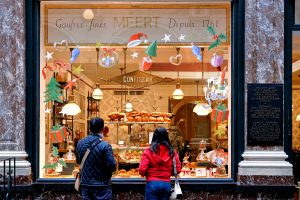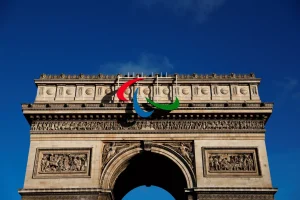One hundred and fifty years ago, this period of revolt and popular uprising – which in some ways resembled a civil war – marked the beginning of the French Third Republic and left its mark on History itself. This itinerary will take you on a journey to the places that represent the key phases of the Paris Commune, a powerful symbol of class struggle…

A little historical background
Before stepping into the shoes of the ‘Communards’, here is a potted history of the events that will help you understand why Parisians felt compelled to take up arms.
When Napoleon III lost the Battle of Sedan on 4th September 1870, during the Franco-Prussian War, the city’s inhabitants rejected the armistice, and the Third French Republic was proclaimed at Paris City Hall (the Hôtel de Ville). Besieged by the Prussian army between 19th September 1870 and January 1871, Paris had to cope with bombardments, cold, and above all, a lack of food. Parisians had to make do with eating the animals left in the city – horses, cats, dogs, rats and animals in the zoo. Nonetheless, the government signed an armistice in January 1871, forcing Paris’ surrender. Elections to a national assembly were organized. Rural-based royalists won a majority of seats. The people of Paris, however, felt only humiliation and betrayal. The situation was not helped by the fact that the Assembly made mistake after mistake (the end of the moratorium on the payment of rent and bills of exchange, the military parade of the Prussians through the capital etc).
President Adolphe Thiers was familiar with Paris and feared a revolt. He himself helped set things off by giving orders to seize cannons positioned in Montmartre and Belleville during the night of 17th to 18th March 1871. And thus began the Commune…
Starting point: Station n°18006, Square Louise Michel
Finishing point: Station n°4017, Place de l’Hôtel de Ville
Suggested duration: 2 hours
Square Louise Michel: insurrection atop a hill, a revolutionary woman
We begin this itinerary in a square which pays tribute to this famous “blood-thirsty wolf” as she was called by her detractors. Like other women, she went from being a teacher (which she described as being like a soldier for civilization) to a soldier for the Commune, victualler and ambulance driver, before becoming an orator during the two month-long rebellion, from March 19th to May 28th 1871. Accused of being one of the “pétroleuses” who set fire to numerous key buildings in Paris, she advocated direct democracy and universal education in order to “give the people the intellectual tools by which they can rise up”. Her political beliefs resulted in her mother being taken hostage. In order to secure her release, she gave herself up to the ‘Versaillais’ (her political opponents). She was the inspiration for Victor Hugo’s poem, “Viro Major” and demanded the death penalty from the court that tried her, even while her co-defendants tried to play down their involvement. During her period of exile in New Caledonia, she became an anarchist (and was the first to use the famous black flag). She returned one year before work began on the basilica of Sacré-Cœur, which was built on the exact spot where Generals Clément-Thomas and Lecomte were murdered, after they had tried to recover Paris’ cannons.
🚲 Vélib’ Station: Station n°18006 – Square Louise Michel

Adolphe Thiers’ house – a brutal crackdown
After travelling along boulevard Barbès, you will come to 28 place Saint-Georges, Adolphe Thiers’ residence. The Chief Executive of the nascent French Republic, like Louise Michel, was a fervent opponent of both the Second Empire and the royalist-dominated National Assembly. It was in this house that he wrote ‘Histoire du Consulat et de l’Empire’ but this is not what he is remembered for by most Parisians… Adolphe Thiers ordered the brutal suppression of the Commune during the “Bloody Week” of 21st to 28th May 1871. Three months later, he was officially appointed the first President of the Third Republic.
🚲 Vélib’ Stations: Station n° 9021 Saint Georges – d’Aumale; Station n°9020 – Toudouze – Clauzel
Félix Potin – The Parisians are starving!
Your next stop is 51 rue Réaumur. Have a good look at the façade of the building – you might recognize the name of what used to be a major retail chain, which closed down in 1995! The forerunner of modern supermarkets, the Félix Potin brand aimed to sell goods at lower prices without any reduction in quality by selling in buik and dealing directly with manufacturers where possible, cutting out the middleman. The war, the siege of Paris, the bombardments and the extremely harsh winter of 1870 didn’t shake its founder’s beliefs: he organized food distribution centres in his shops and helped promote local soup kitchens. He even bought Castor, an elephant living in the Paris zoo, and sold him off in slices! Was he a profiteer or a philanthropist? The scene of the crowd queuing outside the door to his grocery shop in November 1870 was captured by painters Alfred Decaen and Jacques Guiaud. The work bears witness to both the epic scale of the events surrounding the Commune and the extreme difficulty of assessing the actions of those who took part in it, even now!
🚲 Vélib’ Stations: Station n°2003 – Saint Denis – Réaumur; Station n°2001 – Greneta – Sebastopol

Rue de la Fontaine au Roi – the last barricade
Pass the place de la République and continue directly to 17 rue de la Fontaine au Roi. It was here (or at least, close to here), that the last barricade of the Communards fell. Eugène Varlin, a member of the First International; Théophile Ferré, follower of Louis-Auguste Blanqui; and Jean-Baptiste Clément, writer of the famous song ‘Temps des Cerises’ (the Time of Cherries) (1866), manned the last barricades and fought together during the ‘Bloody Week’ against 120,000 government soldiers who, one by one, broke through Paris’ barricades. To this day, the debate amongst historians as to how many Communards were involved in the fighting continues to rage, both for practical reasons (the national guard was widely dispersed and therefore harder to count) and because of political biases: estimates range between 20,000 and 170,000.
The last barricade fell the day after the massacre at the Communards’ Wall in Père Lachaise cemetery, where 147 Communards were executed. The victims of the ‘Bloody Week’ have traditionally been commemorated here.
🚲 Vélib’ Station: Station n° 11034 – Parmentier – Fontaine au Roi
La Bastille – From one Revolution to another, down the ages
After going down Boulevard Voltaire and Boulevard Richard Lenoir, we reach the Place de la Bastille. This location continues to exhibit a revolutionary vibe, or at the very least, a decidedly non-conformist feel – from the taking of the Bastille prison in 1789 to the Colonne de Juillet column, commemorating the July 1830 revolution. It’s also the starting point for modern day demonstrations…On 24th May 1871, the Communards tried to topple the column, which was seen as a symbol of King Louis-Philippe, Adolphe Thiers merely being a former advisor of his…
In 2021, the programme of events marking the Commemoration of the Commune officially began on 18th March on the place de la Bastille, a location that’s redolent of revolution.
Vélib’ Stations: Station n° 11001 – Richard Lenoir – Place de la Bastille; Station n° 12001 – Bastille – Biscornet

Square George Caïn – An open-air sculpture museum
The fall of the Commune was accompanied by much destruction – of human life, of course, but also architectural and cultural devastation. In retaliation for the ‘Bloody Week’, Paris burned: the Tuileries, the Hôtel de Ville (city hall), the Palais de Justice (the courthouse), the Préfecture (police headquarters), the Cour des Comptes (the court of audit, formerly housed in the Palais d’Orsay, where the Musée d’Orsay now stands) and more. The original collection of the Carnavalet museum was lost in the fire at city hall, where it had been stored. Now, it’s artefacts from the Commune and examples of the destruction suffered during this time which are on display in the museum and its grounds. Here you’ll find the Palais des Tuileries’ central pavilion pediment, along with its clock. Even today, it is still blackened from the flames. Before you finish this part of the itinerary, don’t forget to look at the rose window style carving taken from Paris’ old city hall.
🚲 Vélib’ Station: Station n° 3002 – Saint Gilles – Turenne
Hôtel de Ville: destruction and reconstruction
If we go back up the rue de Rivoli, we’ll end up facing Paris City Hall, the Hôtel de Ville, the last stage in our itinerary and the political symbol par excellence of the Commune.
On 24th May 1871, eight million documents comprising the city archives went up in smoke, together with the Renaissance style building – the Communards desiring to set up a network of free towns and villages that would operate independently of central authority. The structure collapsed, but the city council took refuge in the palais du Luxembourg. Two years later, plans for a new City Hall that was to be twice as large as its predecessor, were unveiled. Work on the project was completed in 1882. As the Communards would have wanted, this new building was designed as an ultra-modern ‘house of the people’, with central heating, electricity, a telephone network and lifts.
🚲 Vélib’ Station: Station n°4017 – Place de l’Hôtel de Ville


